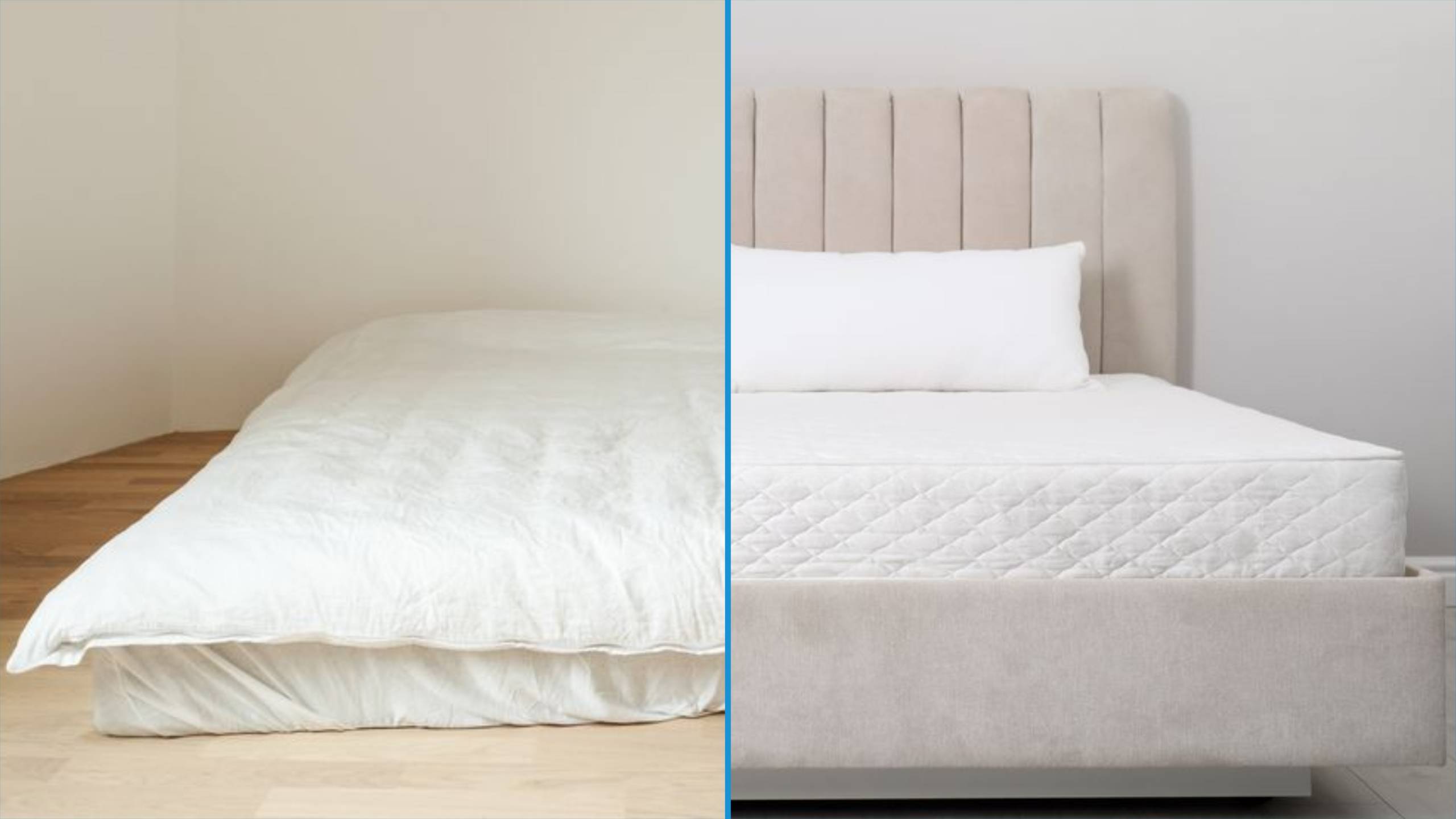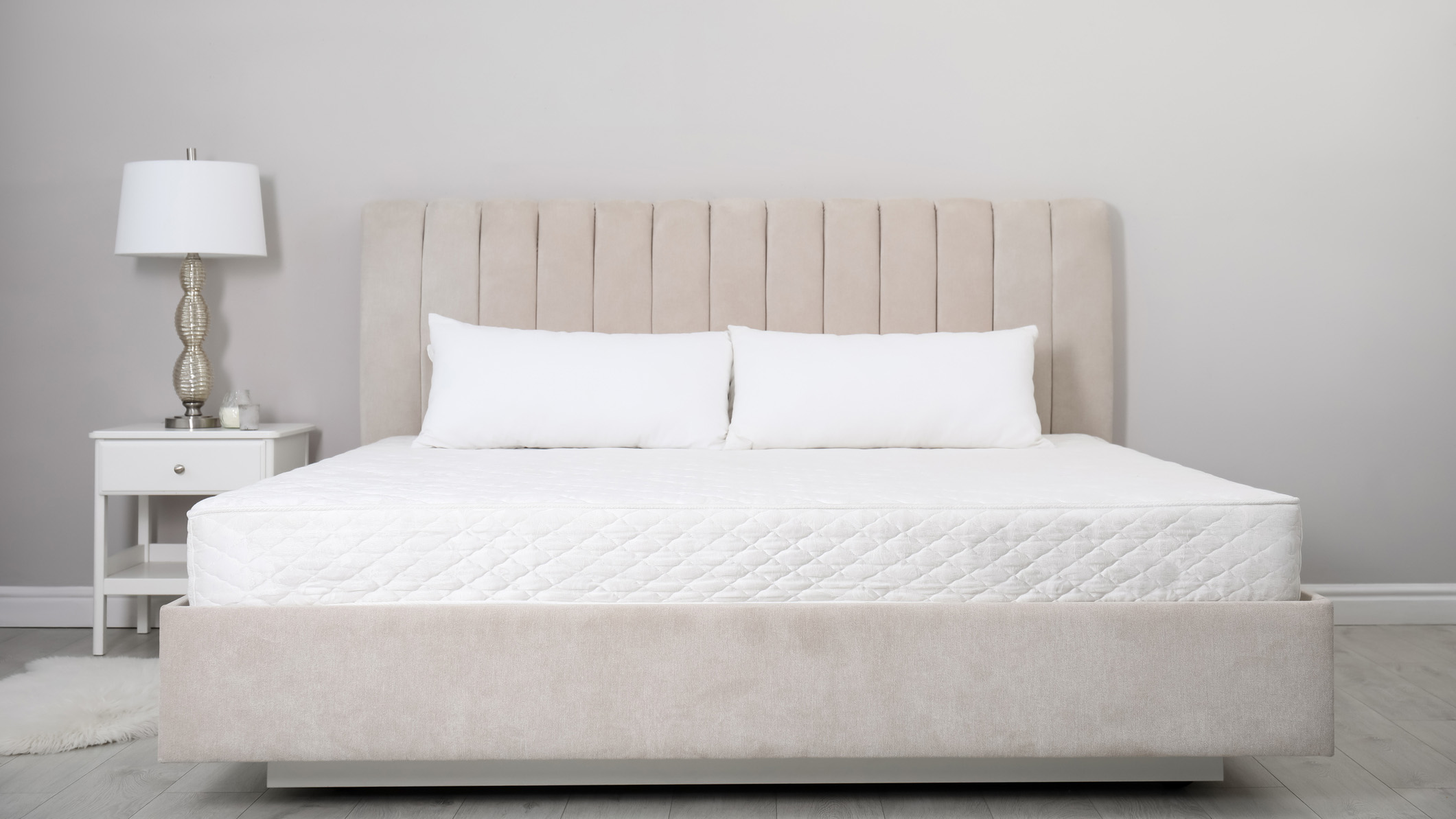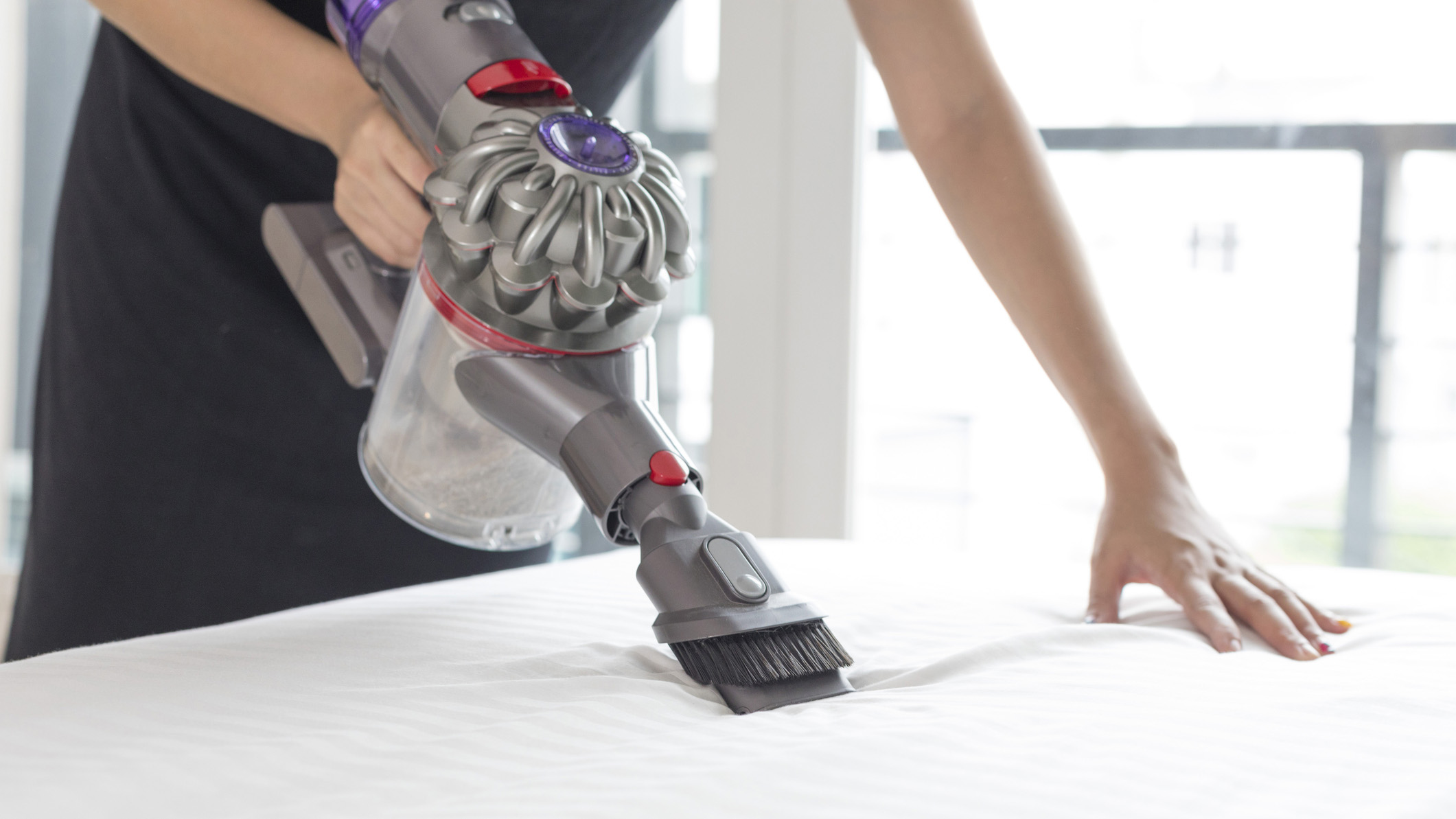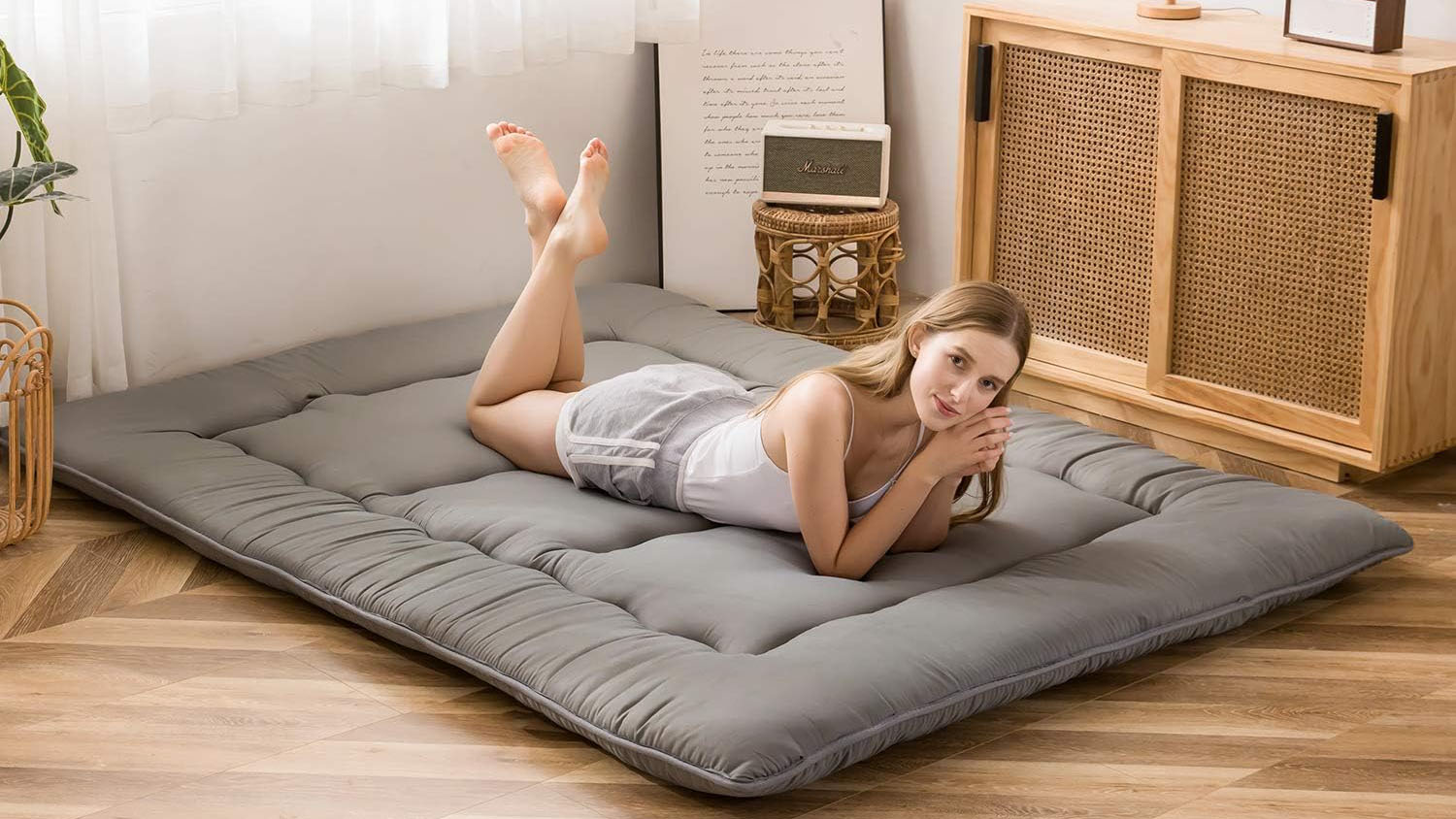Mattress on the floor vs bed frame: Which is best for your sleep?
We compare the pros and cons of putting your mattress on the floor vs on a compatible bed frame

In our mattress on the floor vs bed frame comparison, we're pitting two of the most common ways of sleeping on a mattress against one another. Putting your mattress on the floor to sleep is natural in many parts of the world, with specialist mattresses designed for that specific purpose.
But many of this year's best mattresses for all sleepers are designed for use with a proper bed base or frame, and putting one directly on the floor could damage it and void the warranty.
However, there are some advantages to sleeping on the floor, such as firming up a soft mattress, or sleeping cooler in hot weather (if you place a memory foam mattress on a cold tiled floor, for example).
So if you're unsure whether to place your mattress on the floor vs a bed frame, we can help you gain some clarity. Here's what you need to know...
Mattress on floor vs bed frame: Key differences
There is an obvious difference between these two sleep setups: in one, your mattress will lie on your carpeted or hard flooring, either with a thin board or mat underneath it, or directly on the floor. (We always recommend placing something under your mattress, instead of straight on the ground.)
In the other setup, your mattress will be placed on a compatible bed frame, bed base, platform or foundation. Both setups will affect the feel, comfort, support and temperature regulation capabilities of your mattress.
In turn, that will affect you quality of sleep – either making it better or worse, depending on your individual needs (as we'll explore here).
Mattress on floor vs bed frame: Support
- Placing a soft mattress on the floor makes it feel firmer
- Placing a firm mattress on a slatted base helps it feel softer
- The comfort layers (at the top) remain unaffected either way

We know from testing the best mattresses in a box that they aren’t designed to be placed on the floor and that doing so could shorten their lifespans. When it comes to comfort and support, most sleepers are going to find a bed frame a better option than the floor.
Those who sleep on their sides in particular should look for a mattress and bed frame combo to ensure plenty of cushioning around the pressure points (the best mattresses for side sleepers tend to be slightly softer to provide said cushioning).
On the flipside, putting your mattress on the floor helps make it firmer, adding extra support. This is useful if your mattress is too soft; firming it up to provide better spinal alignment and can help extend how long a mattress lasts. Combining a mattress for back pain and placing it on the floor, for example, may improve aches and pains even further.
Mattress on floor vs bed frame: Temperature
- A slatted bed frame provides additional airflow
- Tiled or hardwood floors help a mattress sleep cooler
- Carpets trap heat and could make a mattress feel hotter
If you’re a hot sleeper, you’ll know how important it is to choose a mattress that has specific cooling qualities to help keep you comfortable at night. Promoting airflow through a mattress is vitally important to help prevent heat from building up, and your bedroom setup needs to reflect this.
One of the easiest ways to help keep a mattress cool is to choose a suitable bed base that also promotes airflow. A slatted bed frame allows even more air to flow through the mattress, preventing heat from building up at the base of the bed with nowhere to go.

But what if you’re set on sleeping on the floor? Choose a hardwood or tiled floor to help keep you cool throughout the night (carpets trap heat), as the mattress won’t be insulated and heat will escape faster. The caveat to this, of course, is that some sleepers may even be too cold.
As we’ve pointed out, putting your mattress on the floor reduces airflow and ventilation and, if it’s placed on a carpet, could also make the bed far hotter at night. But if you choose a solid bed base as opposed to a slatted one you could run into some of the same problems, with airflow being compromised.
If you’re an exceptionally hot sleeper, we’d recommend investing in one of this year's best cooling mattresses to keep you comfortable at night.
- Read more: Ditching the bed this World Sleep Day? 3 things you need before putting your mattress on the floor
Mattress on floor vs bed frame: Hygiene
- Mattresses on the floor are at greater risk of mold and mildew
- Putting your mattress on the floor can exacerbate allergies
- Neither sleep setup is immune to dust mites and bed bugs
Place your mattress on the floor and you’re immediately raising the risk of mildew and mould developing. With zero airflow between the mattress and the floor, you’re creating a moist spot where nasties can breed and gather (you could even run the risk of bed bugs as well).
In addition, placing your mattress on the floor could aggravate your allergies, with dust and dust mites accumulating faster. Tatami mats are commonly used with Japanese floor mattresses, but you could look at a bunky board, non-slip mattress pad or even a simple blanket, to offer the base of your mattress more protection when place on the floor.

Placing your mattress on a compatible bed frame doesn't exempt it from dust mites, bacteria or bed bug infestations, but it does decrease the risk of mold and mildew. This is an important consideration if you live in a home already prone to mold, or you live in a humid environment.
Mattress on floor vs bed frame: Cost
- A bed frame is more expensive than a mattress on the floor
- Putting your mattress on the floor could void its warranty
- Dedicated floor mattresses are cheaper than traditional mattresses
Buying a mattress is an investment, even with the almost permanent discounts offered by many leading brands. If you want a mattress to last, you’ll want to buy one that’s good quality and made of sturdy materials that will stand the test of time. Add in an equally sturdy bed base and prices can shoot up.
Fortunately there are plenty of monthly mattress sales to take advantage of, with larger discounts around major holidays such as 4th of July mattress sales, the Labor Day mattress sales and Black Friday mattress deals.
Skipping the bed base altogether could actually be a false economy, as many mattress manufacturers will void your warranty if you place your mattress on the floor and don't support it with a proper bed base. You could also reduce its lifespan.
If you are seriously considering sleeping on the floor, a dedicated floor mattress could be cheaper and more suited to the purpose.

Mattress on floor vs bed frame: Which is best for you?
Place your mattress on the floor if…
- You need to make a soft mattress firmer: Sagging and too soft mattresses will instantly feel firmer if you put them onto the floor, meaning you could extend the lifespan of your old mattress a little.
- You want improved spinal alignment: Because sleeping on the floor provides a firmer sleeping surface, you may get better spinal alignment, improved posture and reduced back pain.
- You sleep hot: Placing your mattress on a hardwood or tiled floor will provide a cooler sleep surface, which may even be too cool for some. Do note that placing it on carpet will likely raise the temperature.
Place your mattress on a bed frame if…
- You want responsive support: A bed frame provides extra support and structure to your mattress, helping it to cushion your pressure points and provide a restful night’s sleep. The support is also more dynamic and responsive with a slatted base (rather than a divan).
- You sleep on your side: Side sleepers need lots of cushioning around their shoulder and hips, and sleeping on the floor could mean that the mattress becomes too hard to support these pressure points.
- You want to keep your mattress clean and hygienic: Putting your mattress on a frame keeps it clear of the floor, avoiding dust, mould and mildew build-up.
Sign up to get the BEST of Tom's Guide direct to your inbox.
Get instant access to breaking news, the hottest reviews, great deals and helpful tips.

Jo Plumridge is an experienced mattress reviewer with several years' experience covering all things mattresses and sleep, and who tests memory foam, hybrid and organic mattresses. What Jo doesn't know about a boxed mattress isn't worth knowing, so naturally we tasked her with producing a series of features for Tom's Guide looking at all aspects of mattresses, from how to pick between latex and memory foam (it's a tricky one), to the seven mistakes people make when buying a mattress for the first time. When testing the DreamCloud Luxury Hybrid for Tom's Guide, Jo said: "I loved the back support and pressure relief it offered. Plus, it looks far more expensive than it is." When she isn’t writing about sleep, Jo also writes extensively on interior design, home products and photography.
